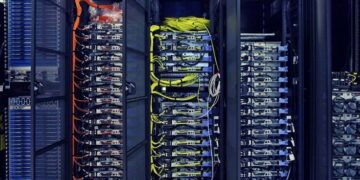In the world of modern fabrication, the term tube laser cutting machine often sounds straightforward—designed to cut tubes, and that’s it. But this assumption couldn’t be further from the truth. The true capabilities of a tube laser cutting machine stretch far beyond what the name implies. It’s not just a tool—it’s an enabler of precision, complexity, and transformation. So what exactly makes it more than a simple cutter?
Let’s dive into the inner workings, industry applications, and transformative role of this machine in today’s manufacturing landscape.
Understanding the Basics: What Is a Tube Laser Cutting Machine?
At its core, a tube laser cutting machine uses a focused laser beam to cut through metal tubing and pipes. These machines are engineered with rotary chucks to rotate the tubes while cutting, enabling intricate designs on round, square, or even custom-profile tubes. But the “tube” in its name does not define its limits. In fact, this machine is often employed in operations far beyond just tube cutting.
Rather than seeing it as a single-purpose tool, professionals in the fabrication industry now regard it as a versatile, multi-functional powerhouse. Its ability to perform precise cuts, piercings, and engravings opens doors across multiple sectors.
It’s Not Just About the Cut—It’s About the Complexity
Think of traditional fabrication methods. Manual tube cutting with saws or CNC machines often requires secondary operations—deburring, drilling, notching, and even bending. A tube laser cutting machine, however, can integrate all these processes in one pass. But it’s more than just convenience—it’s about how it enables the realization of previously impossible designs.
The real magic lies in complex geometries. Curved slotting, oblique cuts, internal cuts within tubes, and intersecting holes that require meticulous alignment are executed flawlessly. The machine isn’t just following instructions; it’s performing intelligent geometry interpretation. This makes it an ideal choice not only for standard production but also for architectural components, automotive frames, and aerospace fittings.
Versatility in Application: Not Just Tubes
Despite the name, a tube laser cutting machine can handle more than round tubes. The term “tube” includes square tubes, rectangular tubes, elliptical tubes, and open profiles like I-beams and angle irons. This machine isn’t confined to round shapes—it can cut metal profiles of nearly any shape or size, provided they fit within the cutting bed.
Furthermore, fabricators use these machines for creating slotted holes in fencing pipes, ornate furniture frameworks, structural components in buildings, or intricate frames in the transport sector. It’s also used to prepare parts that are later bent into their final shape—allowing for cleaner, tighter assemblies with minimal manual effort.
Even non-conventional materials like coated steel, stainless steel, aluminum, and even copper alloys are processed with consistency. Industries such as medical device manufacturing, sports equipment production, and even musical instrument fabrication are utilizing these machines for tasks that traditional tools couldn’t perform efficiently.
Automation That Changes the Game
The hidden gem of a tube laser cutting machine lies in its seamless integration into automated systems. These machines are frequently paired with automatic loading and unloading equipment, intelligent nesting software, and robotic handling systems. This makes them a natural fit for Industry 4.0-driven factories that value data, precision, and workflow efficiency.
Operators can feed long metal tubes into the machine, set up their digital design files, and let the equipment execute operations without human intervention. The result is not only improved output but also reduced waste, better material yield, and lower energy consumption—an increasingly important factor in sustainable manufacturing.
In fact, many manufacturers have reported that switching to tube laser cutting machines reduced their lead times by up to 70%, allowing for quicker turnarounds, more customized production runs, and better inventory management.
Redefining Design Possibilities
One of the most overlooked impacts of using a tube laser cutting machine is the way it influences design. Engineers and product designers often have to work within the limitations of the tools available. But with a machine that can cut at any angle, create slots, perforations, and tab-and-slot joints with micron-level accuracy, those limitations evaporate.
Imagine designing a lightweight bicycle frame with internal cable routes or a modular office partition system with invisible fasteners. These aren’t just theoretical designs—they’re now mass-producible realities, all thanks to the capabilities of tube laser cutting.
In essence, the machine doesn’t just bring designs to life—it redefines what’s possible to design in the first place. This, in turn, fuels innovation across product categories and industries.
Precision That Doesn’t Compromise Speed
A common misconception is that precision comes at the cost of speed. But this isn’t the case with tube laser cutting machines. The laser source—whether it’s fiber or CO₂—offers cutting speeds that dwarf traditional techniques, without sacrificing accuracy.
With advanced control systems and adaptive focus capabilities, the machine cuts different material thicknesses and types on the fly. And since there’s minimal mechanical contact, there’s less wear and tear, meaning more uptime and consistent output.
This precision-speed combo is why industries such as shipbuilding, rail transport, and heavy machinery are switching to laser tube cutting. They get the parts they need, faster and with tighter tolerances.
Supporting Complex Assemblies and Welding
Let’s not forget the downstream impact of a tube laser cutting machine. The accuracy of the cuts and the consistency of the joint placements simplify assembly operations significantly.
For example, notched ends can be made to fit together like puzzle pieces, which simplifies tack welding and improves overall strength. Weld-ready surfaces, perfectly mitered corners, and consistent bevels lead to superior assemblies and minimize post-processing.
This has changed how metal fabricators approach production. Where once they required large teams and complex jigs, now they rely on fewer workers and more intelligent parts.
In-House Capabilities and Scalability
Another overlooked aspect is how a tube laser cutting machine allows manufacturers to bring cutting operations in-house. Rather than relying on external vendors with long lead times and high costs, businesses are now investing in these machines to gain more control.
This has resulted in improved production planning, reduced dependency on outsourcing, and higher profits over time. As demand grows, businesses simply scale up—adding another machine or integrating it with additional automation modules.
For small shops, this means entering high-value markets. For larger operations, it means building smart factories with decentralized production lines. In either case, the investment in a tube laser cutting machine becomes a growth catalyst.
Future-Proofing Your Workshop
The manufacturing landscape is evolving fast. Customer expectations are rising, competition is global, and customization is no longer a luxury—it’s a requirement.
A tube laser cutting machine meets this challenge head-on. It allows fabricators to move from one-off prototypes to full-scale production without changing tools. It enables agile manufacturing practices, where job shops can switch from construction frames to art installations in a matter of hours.
With constant advancements in laser power, cutting head technology, and material handling, these machines are built not just for today’s needs, but for the innovations of tomorrow.
Final Thoughts
At first glance, a tube laser cutting machine might seem like a straightforward piece of equipment designed for a specific job. But that assumption would be a missed opportunity. What lies beneath its surface is a machine that transforms fabrication from a linear process into a world of creative possibility.
It empowers manufacturers to simplify their operations, elevate their precision, accelerate their production, and expand their design horizons. Whether you’re in heavy industry, fine art metalworking, or custom furniture manufacturing, this tool is more than just a cutter—it’s a strategic asset.
If your workshop or factory is looking for adaptability, long-term savings, and the ability to lead rather than follow in today’s manufacturing revolution, then it’s time to look beyond the obvious. The tube laser cutting machine is not just about cutting tubes—it’s about reshaping the way you work.























